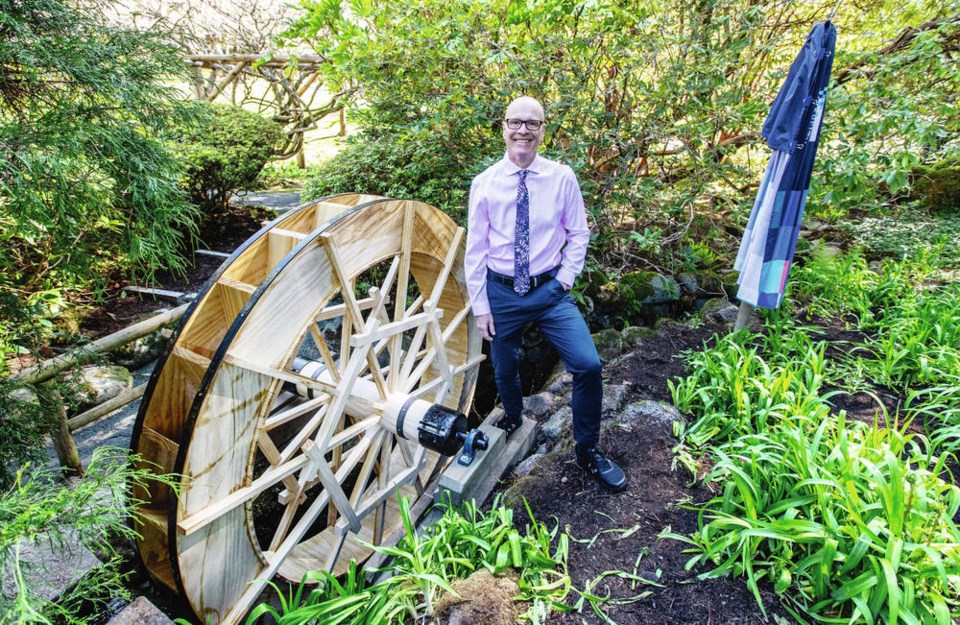A replica of a waterwheel that once stood in the Japanese Garden on the grounds of Hatley Park was unveiled Friday, as Royal Roads University launched a new fundraising campaign aimed at restoring the garden and a glass conservatory.
The campaign hopes to reach an initial target of $100,000 for a full-scale restoration.
Philip Steenkamp, university president and vice-chancellor, unveiled the detailed reproduction of a waterwheel that stood on the same site for more than a century.
“The interaction of a waterwheel and nature results in a greater force,” said Steenkamp. “Similarly, by working with generous donors, we can create spaces that provide greater peace and solace — so essential in this time of great change and uncertainty. “
The university sits on the grounds of Hatley Park, an Edwardian estate that was built in 1908 by B.C. Lieutenant Governor James Dunsmuir. The original Japanese Garden was designed in 1910 by Isaburo Kishida, who had arrived in Canada to help his son build a Japanese tea garden in the Gorge Park area.
Japanese gardens were a trendy choice for stylish estates in the Edwardian era and Kishida’s services were sought out by both Jenny Butchart, founder of Butchart Gardens, and Dunsmuir’s wife, Laura Dunsmuir.
Kishida designed gardens for both women, with Hatley Park being completed first.
The estate’s other formal gardens, which cover eight hectares, were laid out between 1913 and 1914, including the Italian, Rose and Woodland Gardens, which remain largely intact.
The grounds of Hatley Park National Historic Site, on the shores of Esquimalt Lagoon, attract nearly 20,000 visitors a year, with public walking trails amid an old-growth Douglas Fir forest and views of the Olympic Mountains.
Steenkamp sees the gardens as an important sanctuary for the community.
“We encourage people to visit us. It is a special place and important place where people can relax and recharge. As we move forward during this pandemic, [a visit to the gardens] can be a part of their recovery,” he said.
In future, he said, the university hopes to bring back community food production and expand its apiary, along with restoring the heritage garden.
The plan is to re-introduce the growing of organic vegetables in the 2.8-hectare garden that used to supply the Edwardian kitchen. The produce will supply the university’s food services, with the surplus donated to local food banks. The same goes for fruit picked from the garden’s orchards.
“The hope is that the choice of plants planted in the garden will reflect the diversity in the community and allow us to reconnect with our Indigenous neighbours.”
Steenkamp also envisions space being set aside to create a community garden.
The existing Glass House, within a walled garden, is just one surviving wing of a much larger conservatory that was damaged beyond repair in a winter storm in the 1950s. When it was constructed in 1910, it was the largest of its kind in Canada. In its heyday, it provided Hatley Castle with a daily supply of cut flowers, regardless of the season.
Funds from the campaign will go towards a full restoration of the structure to transform it into a hub for teaching and research.
The university says it spends about $1 million annually to care for the gardens and grounds, which total 228 hectares.
For more information, go to rruinbloom.ca.
parrais@timescolonist.com



